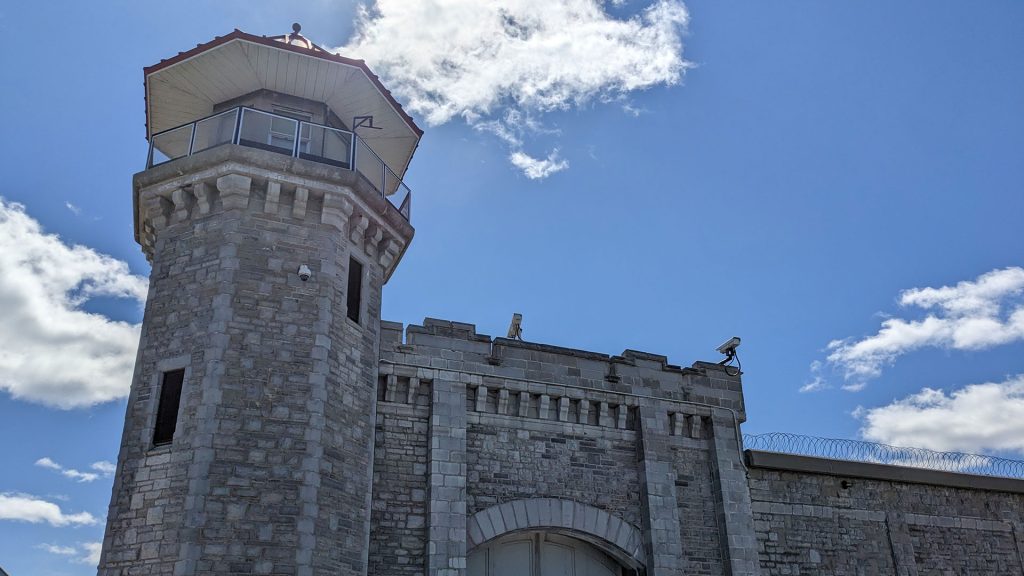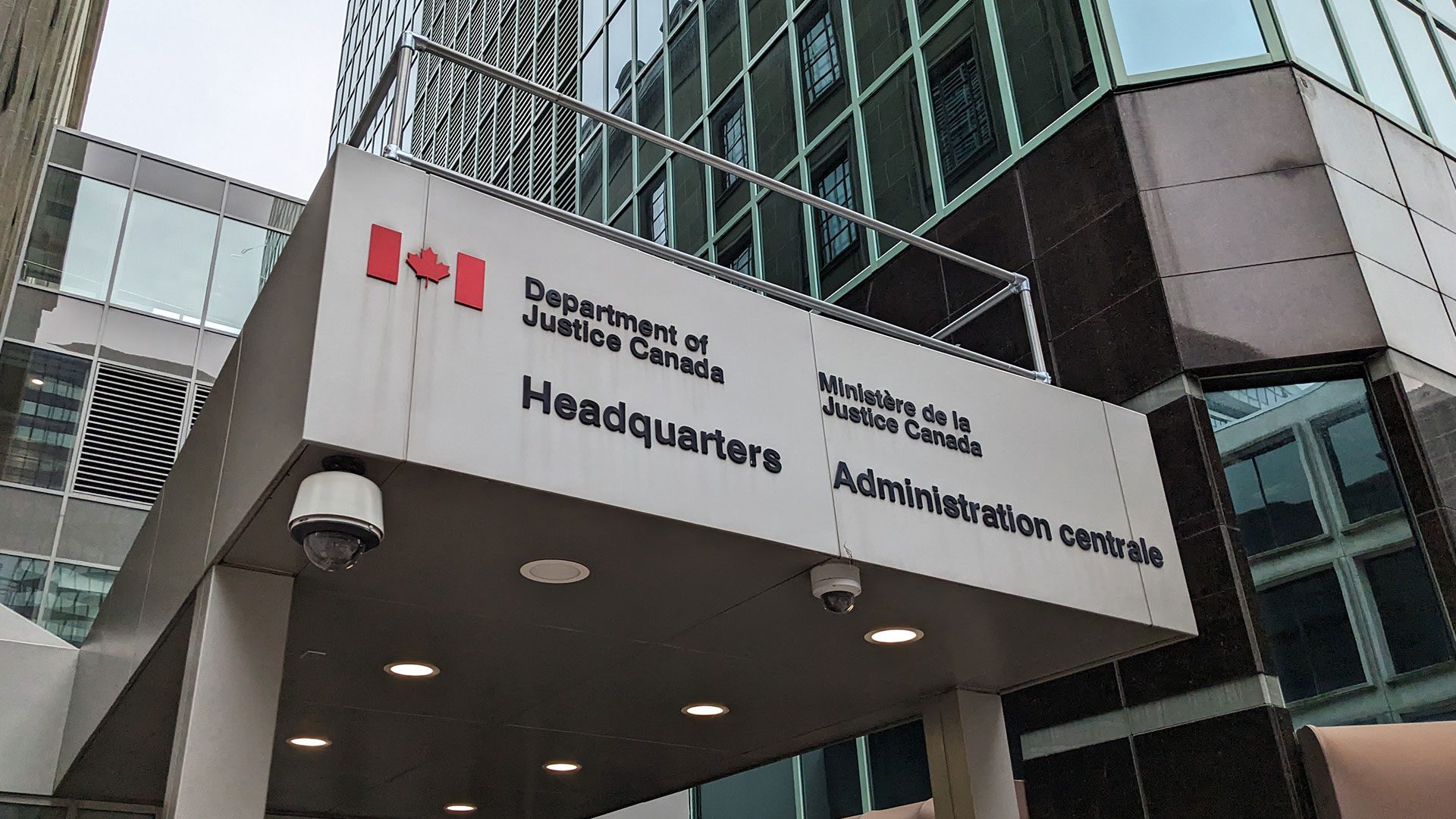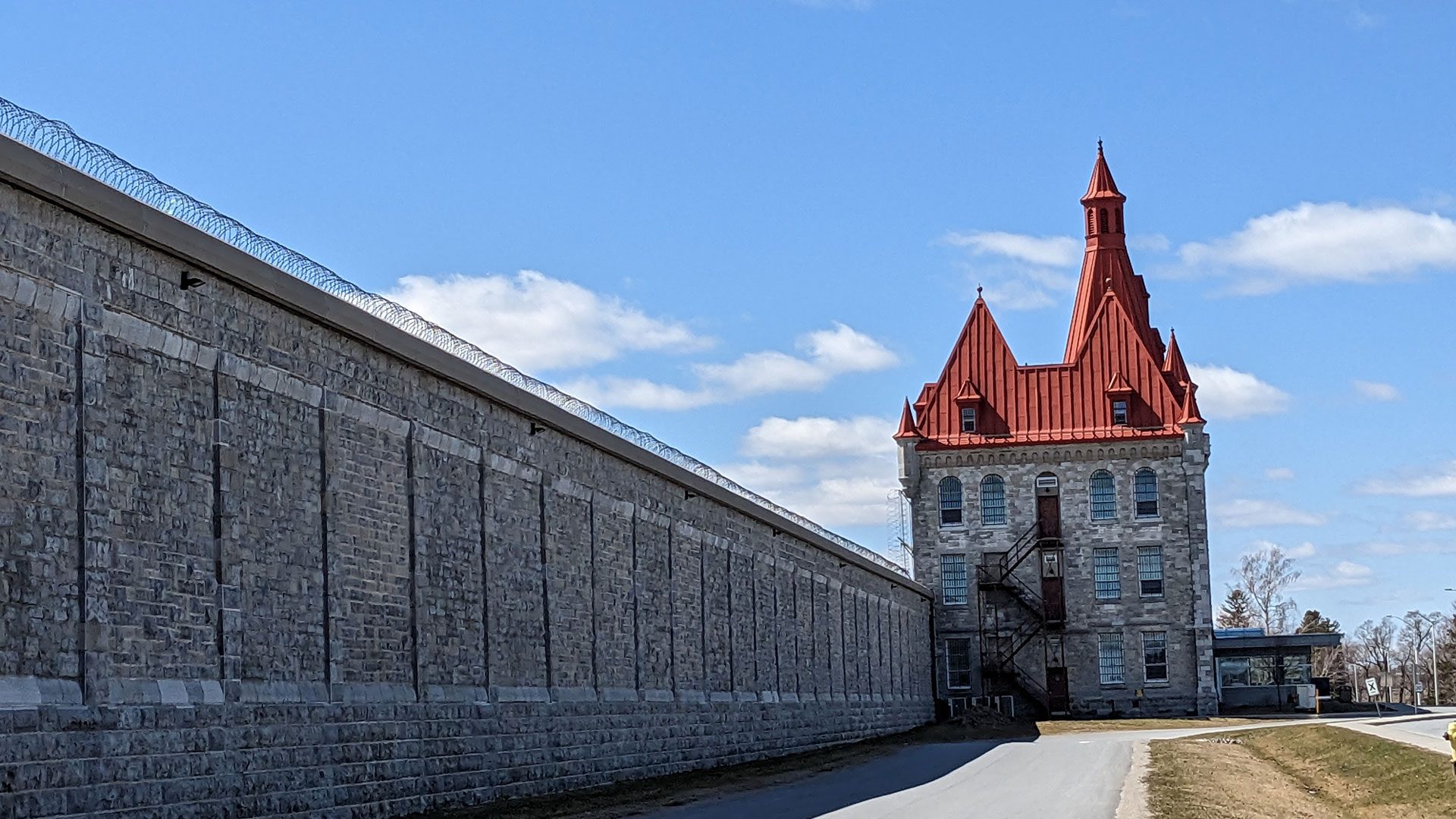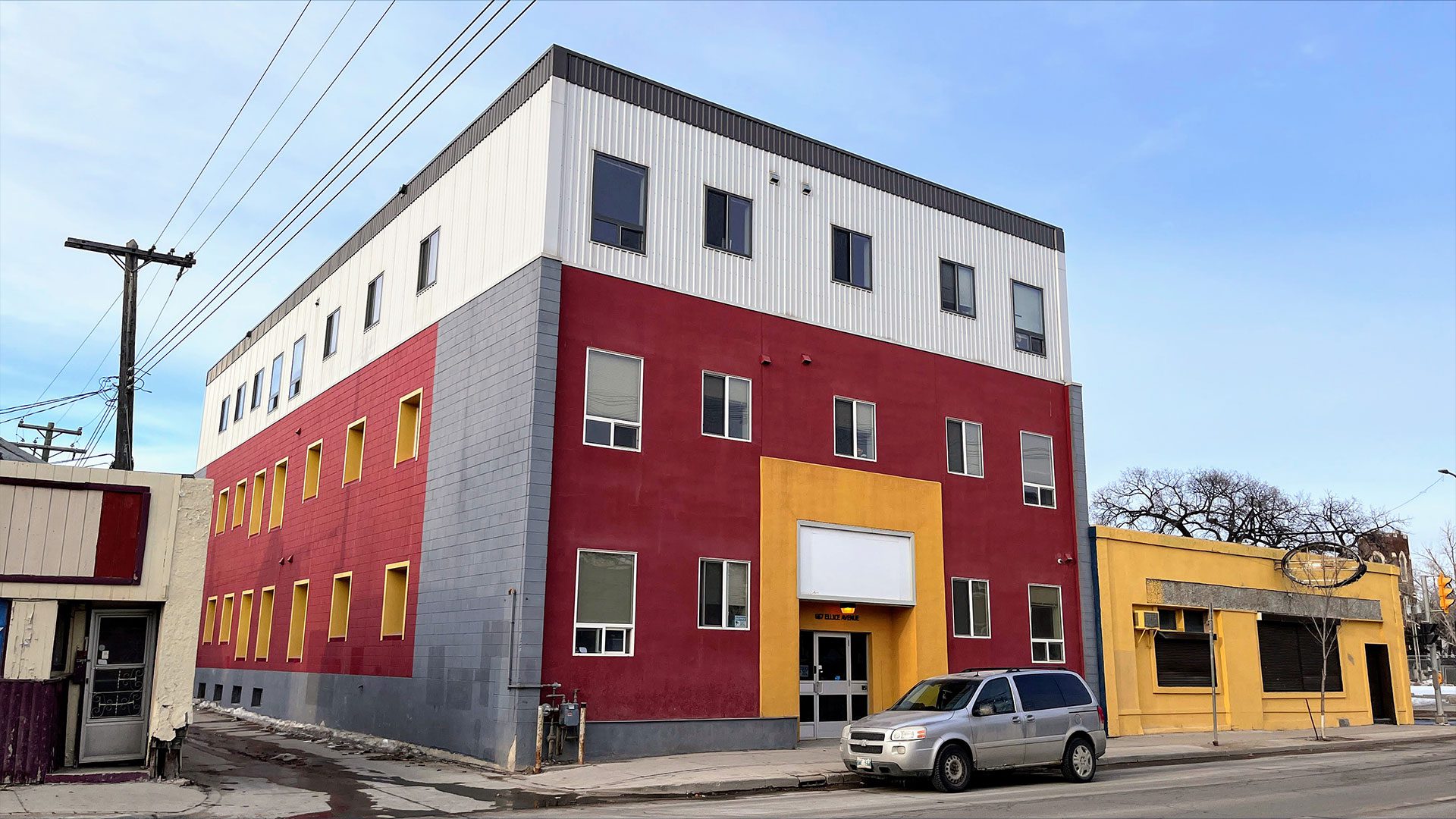
While Kathy Neil prepares to start her new job at the Correctional Service of Canada (CSC) as its first deputy commissioner of Indigenous corrections, the problems she’s been hired to fix are more than a century old.
Neil, a career bureaucrat who has risen through the ranks of the correctional service including a stint as warden at the Saskatchewan Penitentiary, was hired for the position in March.
She said, as a Métis woman from Prince Albert, Sask., she’s ready for the task.
“I’ve worked in corrections for approximately 27 years, I started as a frontline correctional officer and you know what? We at CSC have always worked towards addressing the issue of overrepresentation of Indigenous people within our institution,” Neil told APTN News. “We’ve made lots of progress in relation to closing the gap of some of the results between Indigenous and non-Indigenous offenders.
“We’ve engaged communities, we’ve implemented a traditional healing practices to blend with western medicine, but we still have lots of opportunities for improvement.”
Government agencies, commissions and committees from both the House of Commons and Senate will agree with Neil’s analysis that there is a need for improvement. There are hundreds of recommendations that say the situation within the walls of Canada’s penitentiaries for Indigenous inmates is getting worse as each year passes.
Some have gone as far to say that CSC is “failing” them.
“You know what, I think it’s a pretty strong statement,” said Neil. “CSC has a has a role to play, with regards to the over representation of Indigenous offenders. I think there are a number of organizations that contribute to that role.
“And I’m hoping to be able to engage with the Indigenous community to build on those contributions that they make because really in order to reintegrate offenders into the community, we can’t do it alone.”
Neil isn’t wrong. There are forces outside of CSC that contribute to the number of Indigenous people being sent to prison in the first place.
According to Justice Canada, the country’s judicial system isn’t helping. A 2021 report from the department said systemic discrimination with its own Crown prosecutors and courts are contributing factors to the growing Indigenous population in jails and prisons.
Researchers found that Indigenous people are overrepresented in Canadian criminal courts and far more likely than Caucasian people to be convicted and Indigenous accused were 55 per cent less likely than Caucasians to have their charges withdrawn, dismissed or discharged.
They’re also 33 per cent less likely to be acquitted and 14 per cent more likely to plead or be found guilty.
Then, once convicted, Indigenous offenders were 30 per cent more likely to be imprisoned.
According to one researcher in the report, this “may be an indication of a greater issue surrounding the fair administration of justice.” The report concluded that the criminal courts are “contributing to differential and disproportionate outcomes for Indigenous people.”
In 2022, 35 per cent of those sentenced to time in prison were Indigenous people.
In 2023, Justice Canada released another report on the factors that have seen a rise of Indigenous people going to prison that also include; issues with community policing, a clash of identities and the lack of programs to help Indigenous inmates inside prison.
Prison watchdogs argue that while corrections doesn’t have control over who is sent to prison – officials within the system have plenty of control over what happens once they’re on the inside.
And that’s where questions surface about whether CSC can actually make the changes that are needed.
Recognizing the problem

Studies involving Indigenous people in prison go back to the late 1880s when various officials raised red flags over the colonial form of punishment they were being subjected to.
“With respect to the Indian, there is no class of criminals whose state of incarceration differs so much from his previous free mode of life as his does; therefore, from his first admission to the prison till the day of his release, he carries on his aspect strong manifestations of dejection and despondency,” wrote a surgeon at the now shuttered Kingston Penitentiary in an 1882 report to the minister of justice.
A century later, in the 1980s, Indigenous peoples made up about “two per cent of the population of Canada, yet they made up 10 per cent of the penitentiary population,” a federal committee reported to the House of Commons.
In 1992, recognizing the issue needed to be addressed, the federal government passed section 81 of the Corrections and Conditional Release Act (CCRA) that allowed corrections to enter into agreements with Indigenous communities to house inmates and offer healing at home rather than in a prison to bring those numbers down.
Then in 1994, former Justice minister Alan Rock introduced an amendment to the sentencing section of the Criminal Code of Canada. Section 718.2(e) calls on judges across the country to use “all available sanctions, other than imprisonment, that are reasonable in the circumstances and consistent with the harm done to victims or to the community should be considered for all offenders, with particular attention to the circumstances of Aboriginal offenders.”
Rock told the House of Commons on Sept. 20, 1994 when Bill C-41 was introduced that “jails and prisons will be there for those who need them, for those who should be punished in that way or separated from society. This bill creates an environment which encourages community sanctions and the rehabilitation of offenders together with reparation to victims and promoting in criminals a sense of accountability for what they have done.”
The amendment was passed in June of 1995.
Eventually, section 718.2(e) became known as “Gladue principles” after a Supreme Court case. The high court ruled that judges needed to take into account an accused’s past when passing sentence.
The ruling also gave life to what are called Gladue reports, a detailed analysis of the person’s life that led them to stand before a judge.
The goal of the report is allow a judge to consider whether serving time in a community is a better option than prison.
Despite these measures, Indigenous people currently make up 32 per cent of the prison population in 2023 despite making up only five per cent of the general population.
And half of the women locked up in prison today are Indigenous.
Does Neil have the support of her boss?

The Office of the Correctional Investigator, Canada’s prison watchdog, first recommended that corrections create a senior position within corrections in a 2001 report to former justice minister and attorney general, Lawrence MacAuley.
In that year, Indigenous peoples made up three per cent of the population – but 20 per cent of the prison population.
“I recommend given the gravity of this issue and the continuing disadvantaged position of Aboriginal offenders that, a senior manager, specifically responsible and accountable for Aboriginal programming and liaison with Aboriginal communities, be appointed as a permanent voting member of existing senior management committees of the Correctional Service at the institutional, regional and national levels,” said former correctional investigator Ron Stewart in 2001.
Corrections resisted the recommendation saying that “senior commissioners” within the service were in charge of implementing its policies for all prisoners.
It was a stance that corrections held right up until 2022.
Neil starts on May 1, more than 20 years later. The position was created by Anne Kelly, the commissioner of the CSC, another career bureaucrat who has maintained for years that there was no need for a position that focussed solely on Indigenous prisoners.
She started her career at Collins Bay Institution in Kingston, Ont., in 1983 and became the commissioner of corrections in 2018.
“The structure we have now is a good one,” Kelly told a House of Commons committee that year on why the creation of the deputy commissioner of Indigenous corrections’ position was unnecessary.
But now that has changed.
“I guess we were quite adamant that the service needed to put a more focus on Indigenous corrections in order to affect changes and improve correctional outcomes for Indigenous prisoners,” Canada’s current correctional investigator, Ivan Zinger, told APTN.
The role of correctional investigator falls under the Public Safety minister. Zinger’s main task is to review the situation inside Canada’s prisons much like an auditor.
“We made the initial recommendations that around the executive table there needed to be somebody solely response for ensuring that any decision taken by the executive committee of Correctional Service Canada takes into account Indigenous issues.”
In 2018, corrections was ordered to review its governance structure and use of community healing lodges.
It’s not clear what kind of governance review took place – but a year later, in a 2019 meeting with the National Aboriginal Advisory Committee, a group made up of elders who advise corrections on policy, Kelly advised them a deputy commissioner dedicated to Indigenous inmates wasn’t necessary.
“The commissioner addressed the OCI’s [Office of the Correctional Investigator] recommendation to appoint a deputy commissioner for Indigenous corrections (DCI) and advised that she is in agreement with the NAAC’s position to not appoint a DCI,” the online notes about the meeting said.
But the damning reports just kept rising.
In 2022, three separate reports were highly critical of corrections for its failure to improve the lives of Indigenous prisoners. One was from Zinger’s office, another from a committee in Public Safety on the new segregation units and the third was from Karen Hogan, Canada’s auditor general.
“It appears that, at the highest levels, CSC [Correctional Service of Canada] does not seem to accept that it has any role or influence on reversing the perpetual crisis of Indigenous overrepresentation in Canadian jails and prisons,” Zinger said, after the release of his 2022 annual report.
Hogan’s report was issued in April and stated that the problems highlighted over decades were being ignored by CSC.
After her report, Public Safety Minister Marco Mendicino ordered Kelly to make changes in his May 27, 2022 mandate letter.
“Create a new position of deputy commissioner for Indigenous corrections,” Mendicino wrote to Kelly. “A direct response to Call for Justice 5.23 of the National Inquiry into Missing and Murdered Indigenous Women and Girls, this role will ensure appropriate attention and accountability towards Indigenous issues in the correctional system, address the overrepresentation of Indigenous offenders (especially women) and help CSC implement the many other Calls for Justice that fall within their purview.”
Corrections said the search for the position started last June.
According to the job posting, the official title, deputy commissioner of Indigenous corrections, is one of 16 similar positions that report to Kelly. It’s aim is to work as the “champion for Indigenous corrections and ensure appropriate attention and accountability towards Indigenous issues, including the overrepresentation of Indigenous offenders, and help CSC to implement the many calls for justice.”
The announcement of Neil’s hiring took place on March 27. Absent from the commissioner’s message is any kind of endorsement that the position will have an effect on Indigenous corrections.
“We take the overrepresentation of Indigenous peoples in our criminal justice system very seriously,” Kelly said, in the announcement. “We need to ensure that Indigenous offenders have the supports they need so they can safely and successfully reintegrate into communities as law-abiding citizens. To achieve this, we must work closely with Elders, Indigenous communities, groups, volunteers, staff and other partners.
“I am pleased to appoint Ms. Neil to this position as we work to fulfill our mandate and deliver on this important work.”
When asked to comment on her boss’ change of heart about the position she’s taking on, Neil said couldn’t comment on what Kelly has said in the past.
“What I can tell you is that I have been in conversations with her and that she is very supportive of the engagement community, looking at new ways to do Indigenous corrections,” she said, adding, “I truly believe that she will empower me to be able to influence decisions as they come forward. I think she’s very supportive of it.”
The hiring should be almost celebratory for Zinger, but if he’s excited, he’s not saying.
“Even when the government of Canada, as you recall, provided its national response to the inquiry into murder and missing [Indigenous] women and girls saying that it will create the position, the service (CSC) still wrote us saying that ‘no’ they have no intention of filling that position,” said Zinger. “So they’re being almost coerced into it and it should be a victory for us because, you know, we were the one that continuously focused on this.”
Zinger said it won’t be easy “going against the grain” at the CSC where the executive seems “set in its ways.” But one area that he’d like to see Neil focus on is section 81 releases first passed by Parliament in the early 1990s.
Critics, like Zinger, the auditor general and various advocacy organizations, including the Congress of Aboriginal Peoples, told APTN the system is falling behind and that section 81 agreements aren’t getting the care and attention from corrections that is needed.
Neil said it’s an area she wants to focus on.
“My goal will be to increase the outreach to communities with regards to Section 81, but also to really fully engage and investigate what our process is and where can we streamline some of those processes,” she said.
As deputy commissioner, Neil believes she has the ability to work with communities.
“I think there will be some strength of networking and relationships actually that I can have to also influence those decisions in a strong way,” she said.
What is a Section 81 release?

There are two kinds of section 81 agreements – one is a lodge that is operated in a community or urban centre but is run by CSC, and the other is solely operated by the community or organization.
At the moment there are six section 81 community healing lodges across the country – two in Alberta, two in Manitoba, one in Saskatchewan and Quebec. None are in British Columbia, Ontario or Atlantic Canada.
There are four lodges that are run by CSC in B.C., Alberta and two in Saskatchewan.
According to a report by Métis lawyer Leah Combs and posted online, CSC isn’t fulfilling Parliament’s desire for this kind of reform for Indigenous prisoners.
“Contrary to legislative intent, the Correctional Services Canada (CSC) has impeded access to section 81 and 84 agreements through over classification, insufficient Gladue application and misdirection of funds,” Combs wrote in the 2018 article.
“Section 81 healing lodges are funded at much lower levels in comparison to healing lodges operated by the CSC, and at much lower levels than regular federal institutions. As a result of this funding gap, s. 81 healing lodges offer their employees lower wages and few or no benefits, resulting in higher staff turnover and the need to allocate more funds toward retraining employees.
“This can result in less committed, less experienced and poorly trained employees, which in turn impacts the lodges’ abilities to administer programming safely and effectively.”
According to corrections, the service is negotiating with 15 communities to create healing lodges for Indigenous prisoners.
According to Zinger’s office, the occupancy rate for healing lodges overall is currently at 66.8 per cent – meaning a third of the lodges are empty at any given time.
That is an issue for Prisoners’ Legal Service which issued a report on April 19 calling on the federal government to divert $1 billion away from CSC’s budget and into communities wanting to set up healing lodges.
Executive Director Jen Metcalfe said for the sake of Indigenous inmates, corrections must be forced to change its ways.
“There have been a lot of analogies between prisons and residential schools – would we ask the principles of residential schools to reform them? No. I think the answer is to take away that authority and fund First Nations and Indigenous organizations to build up alternatives and prevention initiatives and diversion initiatives and wraparound services within communities to avoid people from getting into the criminal legal system in the first place,” said Metcalfe.
“That would be in accordance with the rights to self-determination under UNDRIP (United Nations Declaration on the Rights of Indigenous Peoples) and Canada’s implementation of UNDRIP.”
Neil takes over as head of the Indigenous Initiatives Directorate, a team of 25 people in CSC who do nothing but work on Indigenous issues.
“Are there still some challenges? Yes, there are. And you know what we’re continuing to address those,” said Neil.
“I just want to comment on all of the work that the Indigenous Initiatives Directorate [a team of 25 people inside corrections that deals with Indigenous issues] has done and that I’m looking forward to working with all of those staff there.”
Editor’s Note: The original version of this story reported that Indigenous people made up 36 per cent of the prison population. In fact, Indigenous people make up 32 per cent of the prison population. We apologize for the error.









